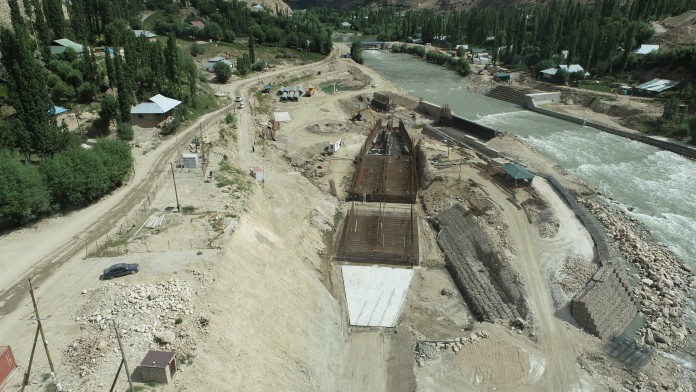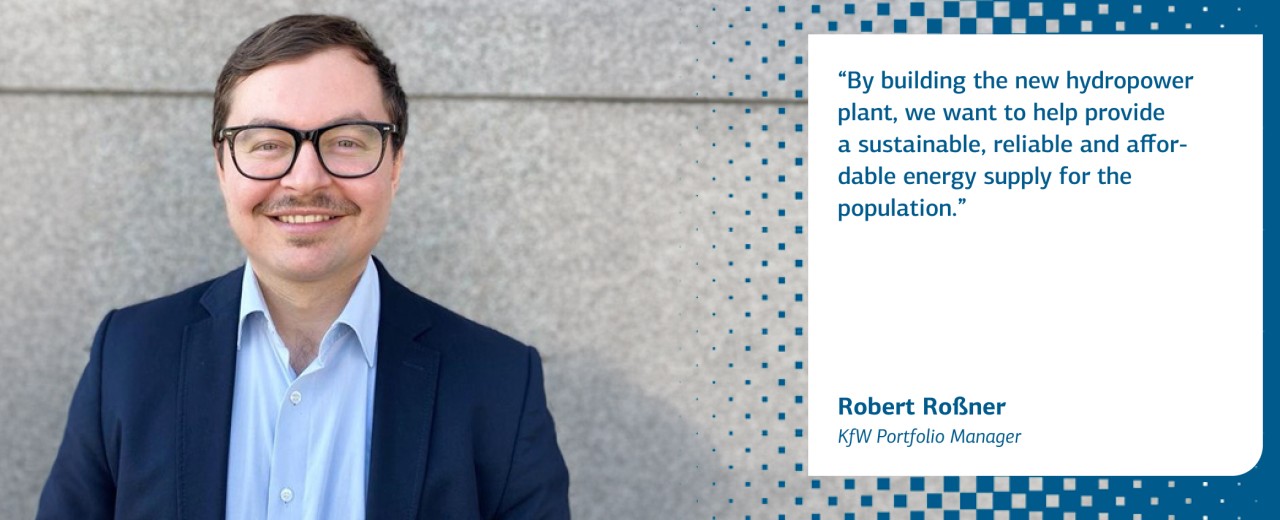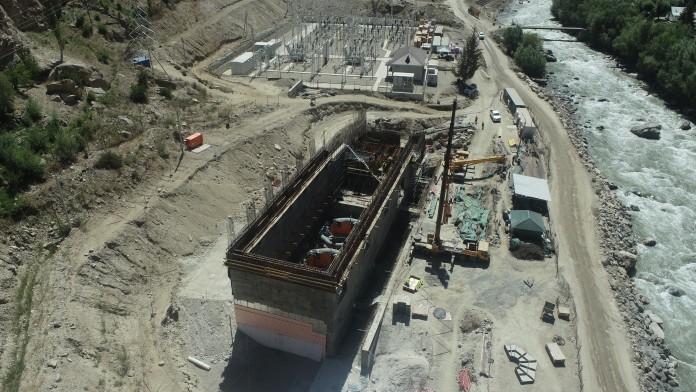A just transition is intended to ensure the transition to a climate-neutral economy takes place in a fair and sustainable manner. The aim is to compensate as much as possible for social disadvantages – which are triggered or amplified by modified economic structures – and to create new prospects for development. One example of this is the plan to build a hydropower plant in Tajikistan with financial support from KfW Development Bank to be commissioned at the end of 2025.

Gorno-Badakhshan in Tajikistan is an autonomous province situated in a high mountainous region at an altitude of up to 7,495 metres. The area is sparsely populated and the poorest region in the country, and struggles with high unemployment. It is heavily affected by natural disasters such as earthquakes and, due to the dry, cold climate and rugged terrain, floods, landslides and avalanches. The new Sebzor hydropower plant, which will have a capacity of 11 MW, is being built here, financed by KfW Development Bank (Financial Cooperation department; FC). The electricity supply in the Gorno-Badakhshan region and border areas of Afghanistan is provided by the company Pamir Energy, which is also the project-executing agency for the new hydropower plant. 90% of Tajikistan’s electricity supply is based on hydropower.
A major problem with the electricity supply in Gorno-Badakhshan up to now is that the two largest hydropower plants are located on the same river, the Gunt. “This means the electricity supply in the region is particularly vulnerable to natural disasters, as was the case most recently in 2015, when floods and mudslides temporarily shut down both hydropower plants and interrupted the entire electricity supply in the region,” explains Robert Roßner, KfW Portfolio Manager. This is why the new hydropower plant is being built on a tributary, the Shokhdara, to ensure greater security of the electricity supply through geographical diversification
In addition, electricity supply bottlenecks occur frequently in winter, as the outflow volumes for hydropower generation are lower than in summer. This is due to the fact that the volume of melting snow is higher during the warmer months, resulting in more snow and glacier water flowing into the rivers. At the same time, energy imported from neighbouring countries has failed to bridge the supply gap. For the rest of the year, the local population therefore has to switch to burning manure and wood. In addition to the negative impacts this has on the climate, environment and health, there is not enough firewood in the region to meet the demand in winter. At the same time, the population is growing, which is increasing the demand for energy. “By building the new hydropower plant, we want to help close this supply gap and enable a sustainable, reliable and affordable energy supply with subsidised electricity tariffs due to the low-income local population,” says Roßner.

With the construction of Sebzor, 17 households containing over 100 people had to relocate, a few hectares of arable land were destroyed and trade in local shops was affected. This is where the just transition concept comes into play, because “relocations in particular represent significant changes for most of those affected and must be implemented in a socially affordable manner in accordance with international standards,” reveals the KfW portfolio manager. For this reason, a resettlement plan based on international standards was developed and successfully implemented in close cooperation between KfW Development Bank, Pamir Energy and international experts.

The relocation of households and the construction of new houses in the new settlement area were financed by KfW, while compensation and support measures have been developed for those whose livelihoods will be limited by the power plant, e.g. in the form of training and education for local businesses. “We are also financing two playgrounds and a new water pipeline in three neighbouring villages that are affected by the construction of the hydropower plant, as part of community development measures”, explains Robert Roßner. “The measures developed together with the affected families and communities aim to ensure that the transition to a more sustainable economy and energy production is socially just”. According to Roßner, the aim is not only to soften the blow of restrictions for people, but to offer them new opportunities – such as employment in the construction companies during the project or at Pamir Energy, one of the largest employers in the region. FC also finances scholarships for young women from the region in studies relevant to the energy sector.
Once the resettlement and its compensatory measures are fully completed, they will be reviewed by an independent auditor. A complaints mechanism has also been set up for the locals concerned.
The Sebzor hydropower plant is the world’s first hydropower plant to be certified with the Hydropower Sustainability Standard by the International Hydropower Association (IHA). This certification indicates how socially and environmentally friendly the project was during its design and preparation. Prior to the start of construction, the project was inspected to determine if it represents the concept of a “just transition”. The project was assessed according to twelve criteria, including 'Cultural Heritage', 'Indigenous Peoples', 'Community Impact and Infrastructure Security' and 'Relocation'.
The certification process took place in several stages. Initially, the project received the bronze standard, but was later upgraded to silver and finally gold after various adjustments. “This certification makes it a flagship project for Pamir Energy and underlines the sustainable design of the hydropower plant,” explains Robert Roßner. “This sends an important message to sustainable hydropower projects worldwide.”
“This certification sends a very important message for Financial Cooperation (FC) as well as worldwide that hydropower can be planned and implemented sustainably.”
KfW Portfolio Manager Robert Roßner
The KfW portfolio manager wants to send another message, too: “Hydropower is a crucial technology for the energy transition, but building the infrastructure has to be sustainable and socially just.” According to Roßner, the Sebzor hydropower plant is proof that projects of this kind require time, funds and desire – but that they are important and feasible ventures. His belief: “Hydropower must be sustainable and it can be sustainable.”
Share page
To share the content of this page with your network, click on one of the icons below.
Note on data protection: When you share content, your personal data is transferred to the selected network.
Data protection
Alternatively, you can also copy the short link: https://www.kfw.de/s/ennB1njm
Copy link Link copied